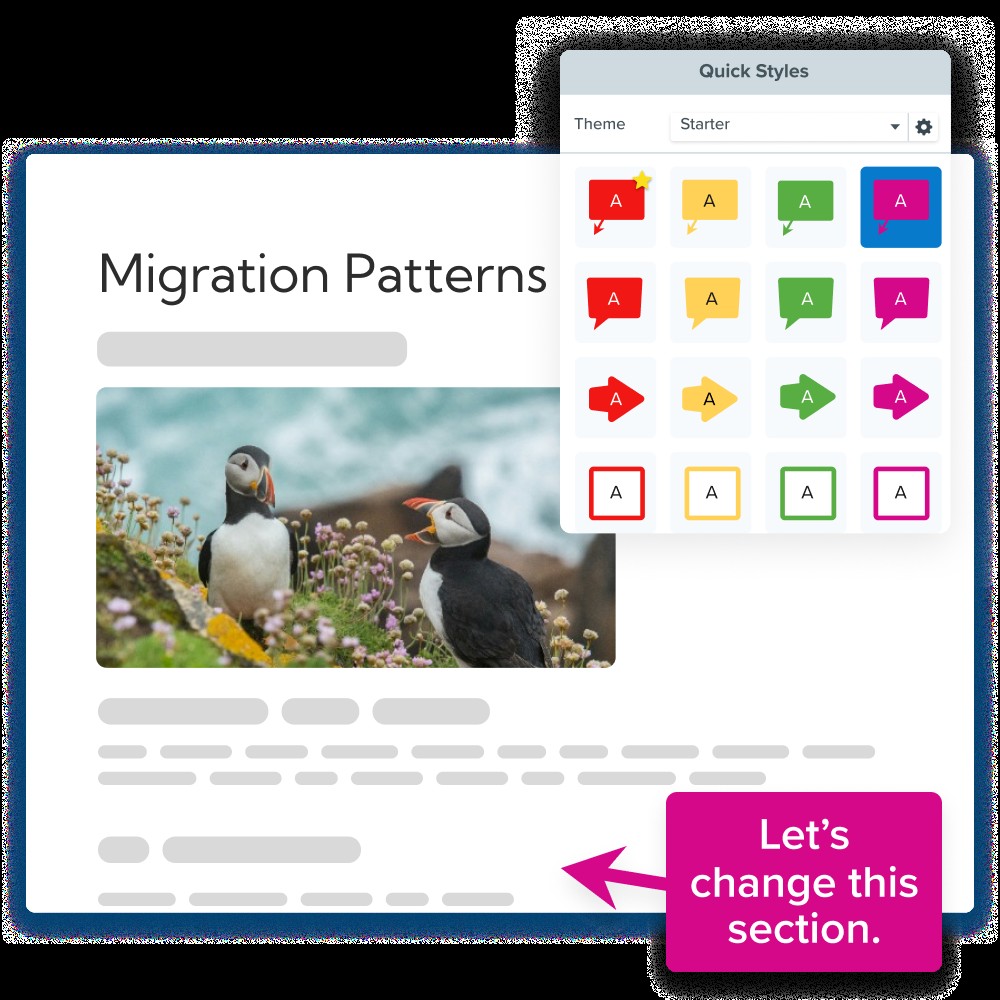Quick reference guides are indispensable tools for enhancing customer satisfaction and ensuring a positive experience. These guides provide swift access to essential information about products, processes, or services. In this comprehensive guide by CONDUCT.EDU.VN, we will delve into the process of creating effective quick reference guides using Microsoft Word, ensuring clarity, conciseness, and user-friendliness. Equip your team with the knowledge to address queries and resolve doubts promptly, thereby boosting both internal and external communication. Discover the art of crafting impactful reference materials, including cheat sheets, concise instructions, and valuable insights to expedite information retrieval, simplify complex topics, and elevate overall comprehension.
1. Understanding the Essence of a Quick Reference Guide
A quick reference guide is a succinct document providing condensed instructions on product usage, typically spanning no more than two pages. It can range from detailed to exceptionally simple, tailored to specific requirements. While comprehensive user manuals delve into intricate product details, quick reference guides prioritize brevity and accessibility, serving as a bridge between initial unfamiliarity and fundamental proficiency. CONDUCT.EDU.VN emphasizes the importance of structured information to facilitate knowledge transfer.
1.1. Key Characteristics of a Quick Reference Guide
Quick reference guides are characterized by several key attributes:
- Brevity: Concise and to-the-point, avoiding unnecessary details.
- Accessibility: Easy to locate and understand information quickly.
- Clarity: Clear and unambiguous language, avoiding technical jargon.
- Relevance: Focus on the most essential tasks and features.
- Visual Appeal: Well-organized layout with visual aids to enhance comprehension.
1.2. The Role of Quick Reference Guides in Various Contexts
These guides play a crucial role across diverse scenarios, including:
- Onboarding New Employees: Expediting the learning curve with essential company procedures.
- Training Sessions: Reinforcing key concepts and providing handy reminders.
- Customer Support: Assisting users in resolving common issues independently.
- Software Documentation: Offering quick tips and shortcuts for efficient software usage.
- Educational Materials: Summarizing core concepts for students.
2. The Importance of Quick Reference Guides
Quick reference guides prove especially beneficial when dealing with products or services boasting diverse or advanced functionalities, yet capable of executing simpler tasks. Consider upgrading from a basic stove to a modern model with advanced features like Convection Bake, Roast, and Bread Proof, controlled via a digital display. A quick-start guide, provided by the manufacturer, becomes invaluable for swiftly mastering basic baking. This guide serves as a handy cheat sheet, enabling users to promptly locate essential information.
2.1. Benefits of Using Quick Reference Guides
Implementing quick reference guides offers numerous advantages:
- Enhanced User Experience: Users gain rapid access to solutions and information.
- Reduced Training Time: Facilitates quicker learning and retention.
- Improved Productivity: Employees can efficiently perform tasks.
- Decreased Support Requests: Users resolve issues independently, reducing support burden.
- Increased Customer Satisfaction: Prompt access to information boosts user contentment.
2.2. Real-World Examples of Effective Quick Reference Guides
Several industries leverage quick reference guides effectively:
- Software Industry: Keyboard shortcuts and troubleshooting tips.
- Healthcare: Medication guides and emergency protocols.
- Manufacturing: Equipment operation and maintenance checklists.
- Finance: Investment terms and financial planning guidelines.
- Education: Study guides and formula sheets.
3. Planning Your Quick Reference Guide
Before diving into Microsoft Word, meticulous planning is essential to ensure your guide effectively meets the needs of its intended audience.
3.1. Identifying Your Target Audience
Understanding your audience is paramount. Consider their:
- Knowledge Level: Are they beginners or experts?
- Technical Proficiency: How comfortable are they with technology?
- Specific Needs: What tasks do they need to accomplish?
- Preferred Learning Style: Do they prefer visual or textual information?
3.2. Defining the Scope and Objectives
Clearly outline the guide’s scope and objectives:
- What specific topics will be covered?
- What tasks should users be able to perform after consulting the guide?
- What information is most critical and should be prioritized?
- What level of detail is necessary?
3.3. Gathering Information
Collect all necessary information from reliable sources:
- Product Manuals: Comprehensive documentation from manufacturers.
- Training Materials: Existing training resources and guides.
- Frequently Asked Questions (FAQs): Common queries from users.
- Subject Matter Experts (SMEs): Knowledgeable individuals providing insights.
- Online Forums: Discussions and solutions shared by users.
4. Step-by-Step Guide to Creating a Quick Reference Guide in Word
Creating an effective quick reference guide in Microsoft Word involves several key steps. Follow these instructions from CONDUCT.EDU.VN to create an outstanding quick reference guide using Microsoft Word.
4.1. Setting Up Your Document
- Open Microsoft Word: Launch the application on your computer.
- Create a New Document: Select “New” and choose a blank document or a suitable template.
- Page Layout:
- Size: Set the page size to “Letter” (8.5 x 11 inches) or “A4” (210 x 297 mm).
- Margins: Adjust margins to “Narrow” (0.5 inches on all sides) to maximize space.
- Orientation: Choose “Portrait” or “Landscape” based on content layout preferences.
4.2. Structuring Your Content
- Headings and Subheadings:
- Use heading styles (Heading 1, Heading 2, etc.) to organize content hierarchically.
- Ensure headings are clear, concise, and descriptive.
- Maintain consistency in heading styles throughout the document.
- Sections:
- Divide content into logical sections based on topics or tasks.
- Use section breaks (Layout > Breaks > Continuous) to manage page formatting.
- Lists and Tables:
- Use bulleted or numbered lists for step-by-step instructions or key points.
- Create tables to present data or comparisons in an organized manner.
4.3. Incorporating Visual Elements
- Screenshots:
- Capture screenshots using the “Print Screen” key or the Snipping Tool.
- Crop and resize screenshots in Word (Picture Tools > Format).
- Add annotations (arrows, text boxes) to highlight specific areas.
- Icons and Symbols:
- Insert icons and symbols from Word’s built-in library (Insert > Symbols).
- Use icons to visually represent tasks, concepts, or warnings.
- Shapes and Diagrams:
- Create flowcharts or diagrams using Word’s shapes (Insert > Shapes).
- Connect shapes with arrows to illustrate processes.
4.4. Writing Clear and Concise Text
- Language:
- Use simple, straightforward language.
- Avoid technical jargon or explain it clearly.
- Write in an active voice for clarity.
- Instructions:
- Provide step-by-step instructions using action verbs.
- Keep instructions brief and to the point.
- Use numbered lists for sequential steps.
- Tips and Notes:
- Include tips, notes, and warnings in callout boxes or colored text.
- Use distinct formatting to differentiate them from regular text.
4.5. Formatting and Design
- Font Selection:
- Choose a readable font like Arial, Calibri, or Times New Roman.
- Use a consistent font size (10-12 points) for body text.
- Color Scheme:
- Use a limited color palette (2-3 colors) for visual consistency.
- Ensure sufficient contrast between text and background.
- White Space:
- Use white space to create visual separation and improve readability.
- Avoid overcrowding the page with text or graphics.
- Page Borders and Shading:
- Add subtle page borders or shading to enhance visual appeal (Design > Page Borders).
- Use sparingly to avoid distracting from the content.
4.6. Reviewing and Editing
- Proofreading:
- Thoroughly proofread the document for spelling and grammar errors.
- Use Word’s built-in spell checker (Review > Spelling & Grammar).
- Accuracy:
- Verify the accuracy of all information, instructions, and data.
- Cross-reference with original sources to ensure correctness.
- Usability Testing:
- Ask colleagues or users to review the guide for clarity and usability.
- Incorporate feedback to improve the guide’s effectiveness.
5. Advanced Tips for Creating Effective Quick Reference Guides
To elevate your quick reference guide, consider these advanced tips from CONDUCT.EDU.VN.
5.1. Using Templates
Leverage pre-designed templates in Microsoft Word to save time and effort:
- Access Templates:
- Go to File > New and search for “quick reference guide” or “cheat sheet.”
- Choose a template that suits your content and style preferences.
- Customize Templates:
- Modify the template to match your branding and content requirements.
- Adjust colors, fonts, and layout to create a unique look.
5.2. Creating Interactive Elements
Enhance user engagement by incorporating interactive elements:
- Hyperlinks:
- Add hyperlinks to external websites or internal document sections (Insert > Link).
- Use hyperlinks to provide additional information or resources.
- Bookmarks:
- Create bookmarks to specific locations within the document (Insert > Bookmark).
- Use bookmarks to facilitate navigation within long documents.
- Table of Contents:
- Generate an automatic table of contents for easy navigation (References > Table of Contents).
- Update the table of contents whenever you make changes to headings.
5.3. Optimizing for Printing and Digital Use
Ensure your guide is optimized for both printing and digital viewing:
- Print Settings:
- Check print preview to ensure the document fits within the page margins.
- Adjust print settings to optimize for black and white or color printing.
- PDF Conversion:
- Save the document as a PDF (File > Save As > PDF) for easy sharing and viewing.
- Optimize the PDF for web or print use depending on the intended purpose.
- Accessibility:
- Ensure the document is accessible to users with disabilities.
- Add alt text to images, use appropriate heading styles, and provide sufficient contrast.
6. Common Types of Quick Reference Guides
Understanding various types of quick reference guides will help you tailor your content effectively.
6.1. Quick-Start Guide
Helps users get up and running quickly with a product or service, focusing on essential steps.
6.2. Core or Basic Task Guides
Provides an overview of how to use the most basic or core features of a product or service.
6.3. Guide to More Advanced Features
Introduces users to other functions and features once they are ready to take things to a new level.
6.4. Guide to Product Changes
Walks users through the changes in a software update, highlighting new features and modifications.
6.5. Step-by-Step How-To
Outlines a process one step at a time, providing clear and concise instructions for task completion.
6.6. User Manual for Products with Limited Features or Functionality
Serves as the primary documentation for products that don’t require a comprehensive manual.
7. Essential Elements of a Great Quick Reference Guide
Creating an effective quick reference guide requires attention to several key elements.
7.1. Know Your Audience and Their Needs
Understand what your intended audience wants to know by gathering feedback through online forums, customer surveys, and technical support staff.
7.2. Keep It Simple
Make information easily and readily accessible by using visuals and including only essential information.
7.3. Use Visuals
Employ visual elements such as screenshots with markups, icons, and product photos to avoid large blocks of text.
7.4. Simple and Easy-to-Follow Layout
Ensure your guide is visually appealing and easy to follow with clear headings and subheadings.
8. Quick Reference Guide Dos and Don’ts
Adhering to these guidelines will help you create effective and user-friendly quick reference guides.
8.1. Dos
- Keep it as short as possible—one to two pages is best.
- Use visuals like annotated screenshots, icons, and product & UX images.
- Use a sensible, easy-to-follow layout with clear headings and subheadings.
- Know your audience and what they need.
- Make it stand on its own, without requiring users to consult the manual.
8.2. Don’ts
- Cram in too much information, trying to fit your whole user manual into one guide.
- Make your font sizes so small that no one can read them without a microscope.
- Use technical jargon.
- Repeat information.
9. Examples of Effective Quick Reference Guides
Explore these examples to inspire your own quick reference guide creation.
9.1. Software Keyboard Shortcuts
A concise guide listing essential keyboard shortcuts for software applications like Microsoft Word, Excel, or Adobe Photoshop.
9.2. Troubleshooting Guide
A step-by-step guide for resolving common technical issues with software or hardware, including solutions for error messages and connectivity problems.
9.3. Medical Dosage Chart
A reference chart providing dosage information for common medications, including guidelines for different age groups and conditions.
9.4. Emergency Procedures
A quick reference guide outlining emergency procedures for various scenarios, such as fire, medical emergencies, or natural disasters.
9.5. Financial Planning Guide
A guide summarizing essential financial planning concepts, including budgeting, saving, investing, and retirement planning.
10. The Future of Quick Reference Guides
As technology evolves, quick reference guides will continue to adapt to meet the changing needs of users. Future trends include:
10.1. Interactive and Digital Guides
The shift towards digital formats will enable interactive elements such as embedded videos, clickable diagrams, and searchable content.
10.2. Personalized Guides
AI-powered tools may enable the creation of personalized quick reference guides tailored to individual user needs and preferences.
10.3. Integration with Augmented Reality (AR)
AR technology could allow users to access quick reference information by scanning real-world objects or environments with their smartphones or tablets.
11. Frequently Asked Questions (FAQs)
11.1. What is a quick-reference guide?
A quick-reference guide is a brief document that provides condensed instructions on how to use a product or service, typically one or two pages in length.
11.2. Is a quick-start guide a type of quick-reference guide?
Yes, a quick-start guide helps users quickly get started with a product or service without needing to know all the advanced features.
11.3. What are some common types of quick-reference guides?
Common types include quick-start guides, core or basic tasks guides, guides to advanced features, guides to product changes, step-by-step how-tos, and user manuals for products with limited functionality.
11.4. What are the essential elements for creating a good quick-reference guide?
Essential elements include knowing your audience and their needs, keeping it simple, using a good layout and design, and incorporating visual content.
11.5. How long should a quick reference guide be?
Ideally, a quick reference guide should be one to two pages long to ensure it remains concise and easy to use.
11.6. What fonts are best for quick reference guides?
Readable fonts like Arial, Calibri, and Times New Roman are best, with a consistent font size of 10-12 points for body text.
11.7. Should I use color in my quick reference guide?
Yes, using a limited color palette (2-3 colors) can enhance visual consistency, but ensure sufficient contrast between text and background.
11.8. How can I make my quick reference guide accessible?
Ensure the document is accessible by adding alt text to images, using appropriate heading styles, and providing sufficient contrast.
11.9. What should I include in a troubleshooting guide?
Include common problems, step-by-step solutions, screenshots, and tips for resolving technical issues.
11.10. How often should I update my quick reference guide?
Update your guide whenever there are changes to the product, service, or procedures to ensure accuracy and relevance.
Conclusion
Creating effective quick reference guides in Microsoft Word is a valuable skill for enhancing user satisfaction, improving productivity, and reducing support requests. By following the steps and tips outlined in this guide from CONDUCT.EDU.VN, you can create clear, concise, and user-friendly guides that empower your audience to quickly access essential information. Embrace the power of simplicity, visual communication, and user-centric design to create quick reference guides that truly make a difference. For more comprehensive guides and resources on creating effective documentation and ensuring ethical conduct, visit conduct.edu.vn today. Our resources are designed to provide detailed information and easy-to-understand guidelines on a variety of topics. Contact us at 100 Ethics Plaza, Guideline City, CA 90210, United States. Whatsapp: +1 (707) 555-1234.


